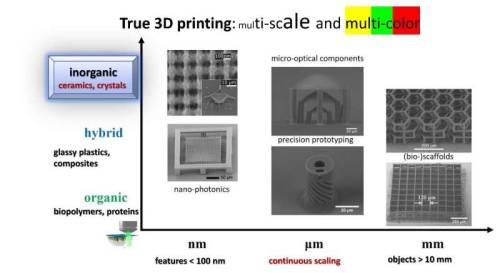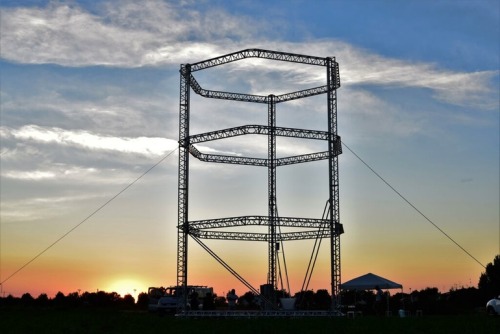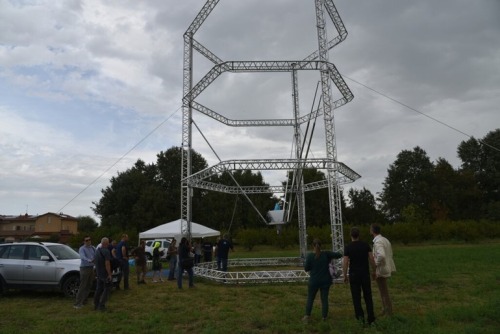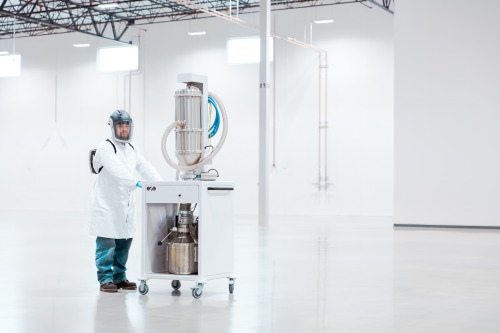#additive manufacturing
Laser additive manufacturing of Si/ZrO2 tunable crystalline phase 3D nanostructures
A new publication from Opto-Electronic Advances reviews laser additive manufacturing of Si/ZrO2 tunable crystalline phase 3D nanostructures.
A route for laser nano-printing of 3D crystalline structures was developed employing ultrafast laser lithography, used as additive manufacturing tool for producing true 3D nanostructures, and combined with high temperature thermal post-treatment, converting the printed material into fully inorganic substance.
The inter-disciplinary experimental work revealed the potential of tuning the resulting ceramic structure into distinct crystalline phases, such as cristobalite, SiO2, ZrSiO4, m-ZrO2, t-ZrO2. The proposed approach achieved below 60 nm for individual feature dimensions without any beam shaping or complex exposure techniques, thus making it reproducible with other established standard or custom-made laser direct writing setups. The principle is compatible with commercially available platforms (for instance: Nanoscribe, MultiPhoton Optics, Femtika, Workshop of Photonics, UpNano, MicroLight, and others). Figure 1 graphically summarizes the approach, involved procedure steps, and resulting outcome.
Post link
Aluminum on the way to titanium strength
NUST MISIS scientists have proposed a technology that can double the strength of composites obtained by 3-D printing from aluminum powder, and advance the characteristics of these products to the quality of titanium alloys: titanium’s strength is about six times higher than that of aluminum, but the density of titanium is 1.7 times higher.
The developed modifiers for 3-D printing can be used in products for the aerospace industry.
The developed modifying-precursors, based on nitrides and aluminum oxides and obtained through combustion, have become the basis of the new composite. The research results have been published in the highly rated scientific journal Sustainable Materials and Technologies.
Two decades ago, molding was considered the only cost-effective way to manufacture bulk products. Today, 3-D printers for metal are a worthy competitor to metallurgical methods. 3-D printers have a chance to replace traditional methods of metallurgical production in the future. Using additive technologies with 3-D printing creates a whole array of advantages, from creating more difficult forms and designs to the technology’s cheaper cost and theoretical edge.
Post link
New NIST method measures 3D polymer processing precisely
Recipes for three-dimensional (3D) printing, or additive manufacturing, of parts have required as much guesswork as science. Until now.
Resins and other materials that react under light to form polymers, or long chains of molecules, are attractive for 3D printing of parts ranging from architectural models to functioning human organs. But it’s been a mystery what happens to the materials’ mechanical and flow properties during the curing process at the scale of a single voxel. A voxel is a 3D unit of volume, the equivalent of a pixel in a photo.
Now, researchers at the National Institute of Standards and Technology (NIST) have demonstrated a novel light-based atomic force microscopy (AFM) technique – sample-coupled-resonance photorheology (SCRPR) – that measures how and where a material’s properties change in real time at the smallest scales during the curing process.
Post link
Additive Manufacturing: Directed Energy Deposition
A type of metal additive manufacturing process, directed energy deposition (DED) uses either powders or wires to create finished parts. Unlike most other AM processes, DED is commonly used to repair components or add additional material, rather than simply create new parts.
Types of directed energy deposition, or other names for the process, include directed metal deposition (DMD), laser metal deposition (LMD), laser-engineered net shaping (LENS), and laser consolidation (LC).
DED uses a deposition head to feed either powder or wire into a laser (or electron) beam that melts the material, thereby building up the surface of the part. Because it is not melting material that has already been laid down (such as in powder bed fusion), DED can build on existing parts. Powders can also be mixed, utilizing different material properties. Using different, compatible materials can increase wear, corrosion, and oxidation resistance, one of the benefits of DED.
Limited in size only by the beam manipulation system, another benefit is that DED can produce relatively large parts, as shown in the top right image above: Sciaky (a US 3D printing company) can make 5-meter-large parts in a variety of different materials. Because of the method of deposition, there is also little to no waste involved. However, DED is also a relatively slow process, which takes much longer than other methods to produce parts.
Sources: ( 1 - image 1 ) ( 2 - image 3 ) ( 3 - images 2 and 4 ) (4)
Post link
#NSF-funded Engineer Chris Williams heads the effort at Virginia Tech to further advance 3-D printing–known among engineers as additive manufacturing–with copper, a widely used conductor in electronics.
Copper is electrically and thermally conductive, and is found in products across all industries, from our personal electronic devices and computers to satellites and nuclear reactors. As such, there are numerous applications for printed copper, including structural heat exchangers, three-dimensional antennas, and components for rocket engines. If successful, the results gleaned from this project can also be used to educate future engineers in designing systems with 3-D printing.
@vtnews @VTEngineering
Additive manufacturing, including emerging “3D printing” technologies, is booming. Last year an astronaut on the International Space Station used a 3D printer to make a socket wrench in space, hinting at a future when digital code will replace the need to launch specialized tools into orb…
Bio-based resin: A breakthrough in rapid prototyping
Lithuanian researchers from Kaunas University of Technology and Vilnius University synthesised and tested a bio-based resin for optical 3D printing (O3DP). The bio-based resin made from renewable raw materials proved to be universal for both table-top 3D printers and state-of-the-art ultrafast laser, suitable for O3DP in the scales from nano- to macro- dimensions. This, according to the researchers, is a unique property for a single photo-resin.
Optical 3D printing (O3DP) is a rapid prototyping tool and an additive manufacturing technique being developed as a choice for efficient and low waste production, yet currently associated with petroleum-derived resins. During O3DP, the photo-curable resin is solidified by treating it with light; such technology makes 3D printing very flexible and precise – the elements can reach sub-micrometres, and also can reach macro- dimensions. The main shortcoming of O3DP is connected to the limitations of the printing materials: their origin, physical and chemical properties, which make the resins not suitable for all setups.
“A universal bio-based resin developed by KTU researchers can be used for a multi-scale 3D printing. Up to now, no single resin was developed which would allow manufacturing of ultra-fine nano-/micro-features and macro-objects out of the same composition,” says Dr Mangirdas Malinauskas, Laser NanoPhotonics Research Group Leader at Laser Research Centre of Vilnius University (VU).
World’s Largest Delta 3D Printer- It can build entire houses out of mud or clay…
The Big Delta printer has unveiled in Rieti, Italy on September 18 by WASP (World’s Advanced Saving Project). The printer is 12-meter tall and was brough to life with the purpose of building nearly zero-cost housing through the use of local materials and as little as energy as possible. This could potentially offer a quick solution to areas struck by natural disaster and satisfy the future housing needs of a rapidly growing world population.
3D-printed houses ma be about to become more and a more commonplace as the UN predicts there will be a need for almost a hundred thousand new homes daily, worldwide, for the next 15 years. The printer is supported by a stury metal frame 6m in diameter, a rotating nozzle doubles as a mixer that keeps printing materials homogeneous, while reportedly requiring only tens of watts of power to work. The possible building materials are plenty, ranging from mud to clay that can be structurally reinforced with small amounts of chemical additives, down to, potentially, cement. (Although this would contrast with the company’s green agenda)
Post link
Here’s an inside look at our new Center for Additive Technology Advancement (CATA) located in Pittsburgh, PA. Funded by various GE businesses, CATA brings additive technologies like 3D printing into the mainstream. Brian Adkins, additive manufacturing engineer, prepares to vacuum a DMLM 3D printer to salvage unused metal powder and prevent cross-contamination. Stay tuned for more glimpses inside CATA this week by following us on Instagram. Photos captured by Chris New.
Post link


















